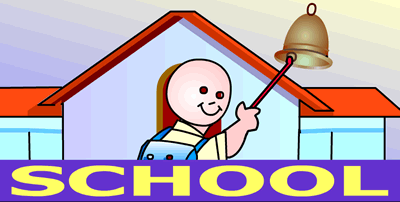
Dimdima
Online Children's Magazine from India

Dimdima
Online Children's Magazine from India

Sainikpuri
CHILDREN'S CONTRIBUTIONS
Sankranti is a harvest festival celebrated in India. Sankranti is derived from the word “Sankraman”, meaning a ‘change’. It is also called “Makara Sankranti’, as the Sun enters “Makara Rasi” that day. It usually falls on 14th of January every year. The sun starts its northward journey from the Tropic of Capricorn towards the Tropic of Cancer. This journey is called “Uttarayan”, meaning northward march. We in India, are to the north of the equator. We rejoice on Sankranti day, because the chilly cold winter comes to a close and healthy sunny days are about to begin.
Sankranti is called “Pongal” in Tamil Nadu and “Pedda or “Peddala” Panduga in some parts of A.P ‘Pedda’ means big and Panduga means festival. It is a festival, when prayers and offerings are made to ancestors. It is celebrated in different ways in different parts of the country as it is a harvest festival. It is a festival to thank God for giving a good harvest. By January the Peddy, the pulses, the sugarcane and all other cereals would have been harvested. The farmers would be happy.
The Sankranthi festival is a three day festival. The first day is “Bhogi”, the second day “Sankranthi” and the third day “Kanumu”. On the first day of “Bhogi” people get up very early and bonfires are lit with old waste material to bid farewell to winter. The streets are swept clean and beautiful rangolis are drawn by women. Small cowdung cubes decorated with flowers are placed before the house welcoming the Goddess of Wealth. In the evening, in some parts of Andhra Pradesh, offerings are made to village deities who give the village health and wealth. In some other parts “Bogipallu are poured on children for their health while in some others, girls gather and dance singing “Gobbiallo” in a chorus.
The next day is Sankranti or Pongal. It is a day of feast. Sweet food is prepared with new rice, new jaggery, new vegetables and fresh milk in new pots. The prepared Pongal (sweet food) is offered to Sun God. Then offerings are made to forefathers. There are some special dishes made for the occasion with pumpkins and greengram. All wear new clothes. Alms are given to the poor. It is a day of enjoyment. Cock fights, gambling etc. are held in the evening. In the north and even in Andhra Pradesh people take a dip in holy rivers and offer prayers. A dip in the Ganges on Makara Sankranti day is considered sacred.
The third day Kanumu is a day meant for cattle. All cattle are given a bath. They are dressed and decorated with flowers. Horns are painted. Cattle are fed with cooked sweet rice. Some worship cows. In the evening bullock cart races are conducted. Bulls are also made to draw big stones. Heavy prize amounts are awarded to the victorious. Bull fights by young men are in vogue in some parts of the country. Sankranti is a festival of joy for all.
EXPLORE MORE...
Dimdima is the Sanskrit word for ‘drumbeat’. In olden days, victory in battle was heralded by the beat of drums or any important news to be conveyed to the people used to be accompanied with drumbeats.
Bharatiya Vidya Bhavan
K. M Munshi Marg,
Chowpatty, Mumbai - 400 007
email : editor@dimdima.com
Bharatiya Vidya Bhavan
505, Sane Guruji Marg,
Tardeo, Mumbai - 400 034
email : promo@dimdima.com
Dimdima.com, the Children's Website of Bharatiya Vidya Bhavan launched in 2000 and came out with a Printed version of Dimdima Magazine in 2004. At present the Printed Version have more than 35,000 subscribers from India and Abroad.